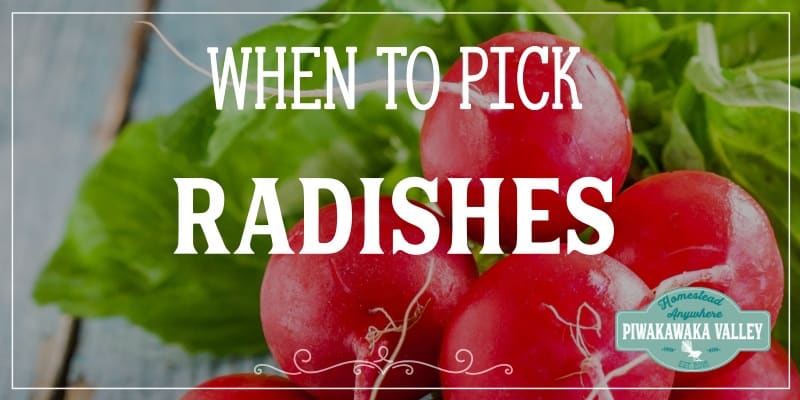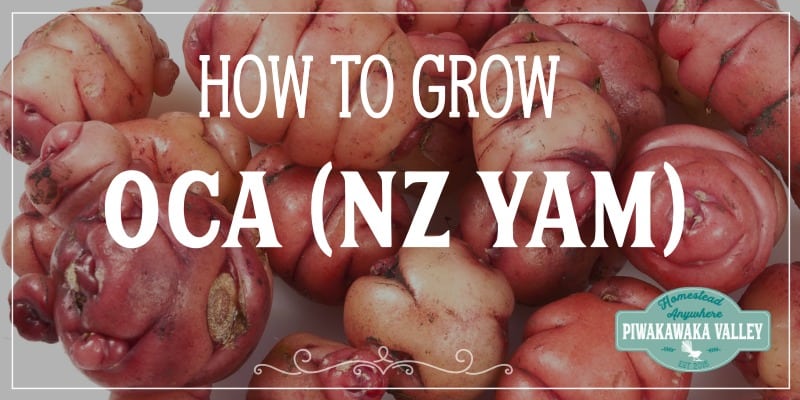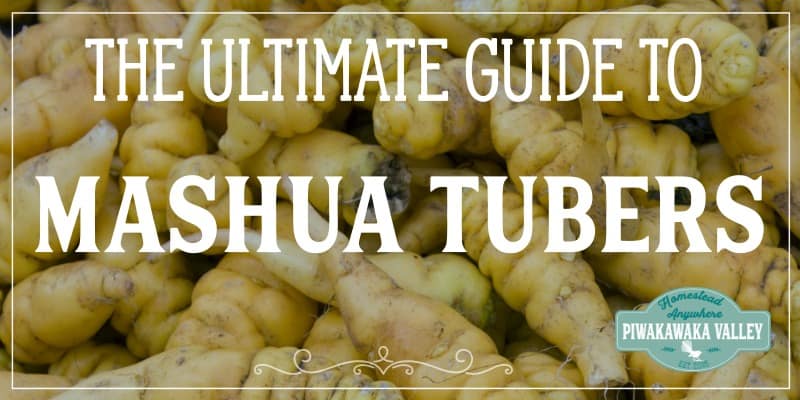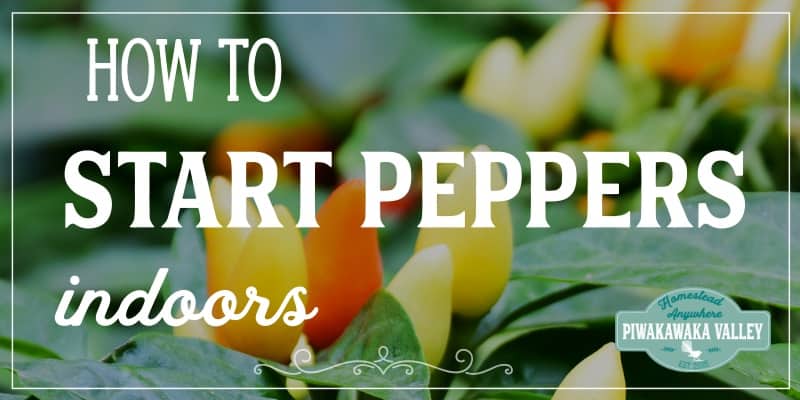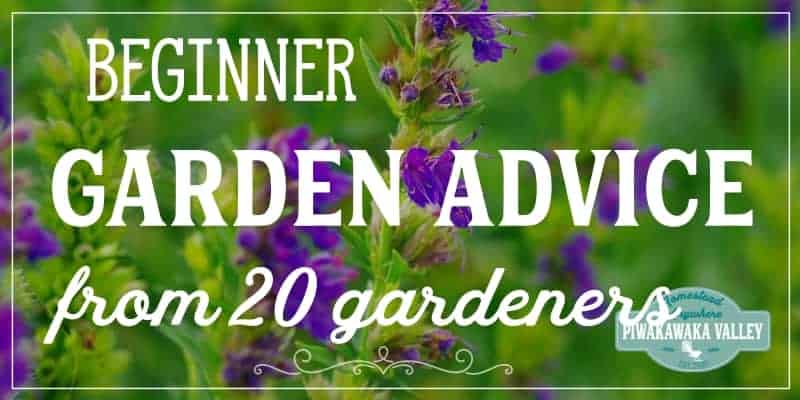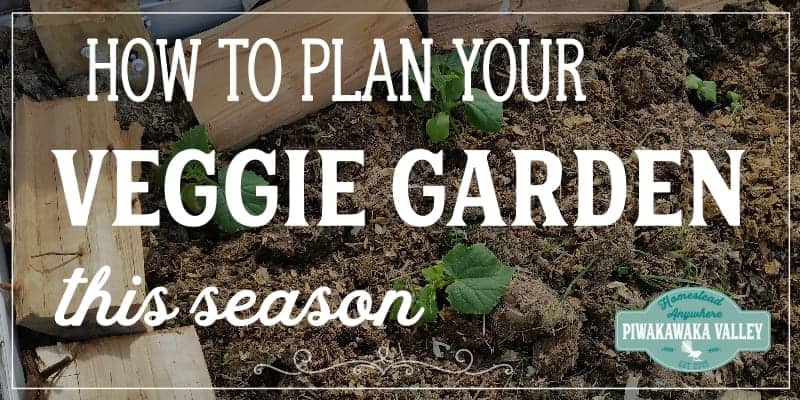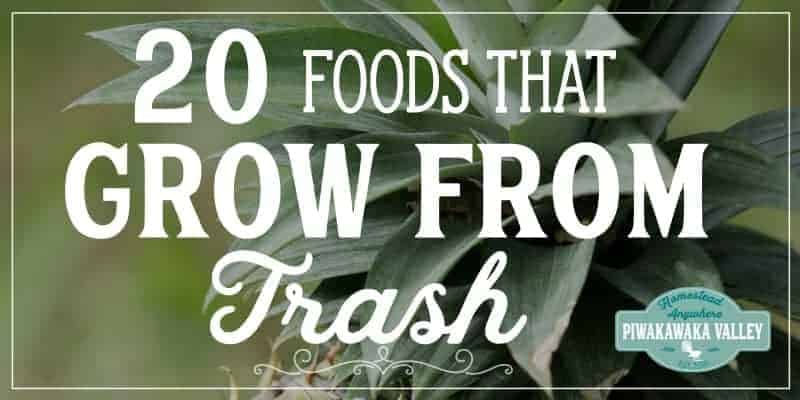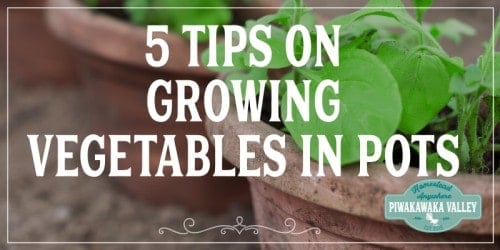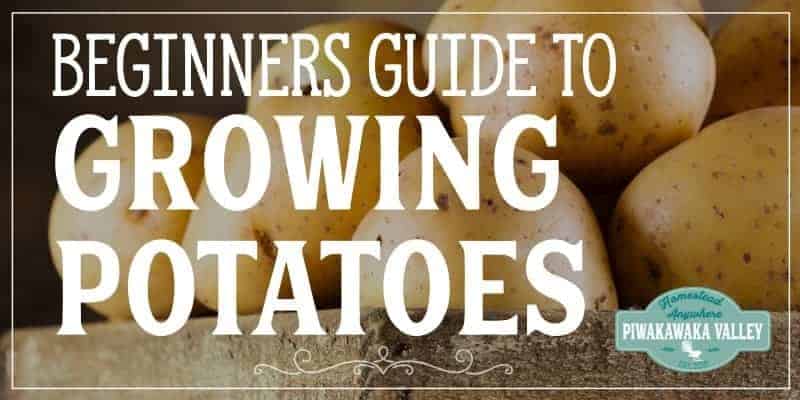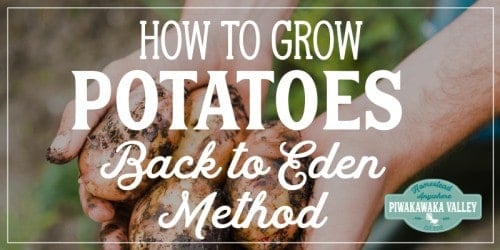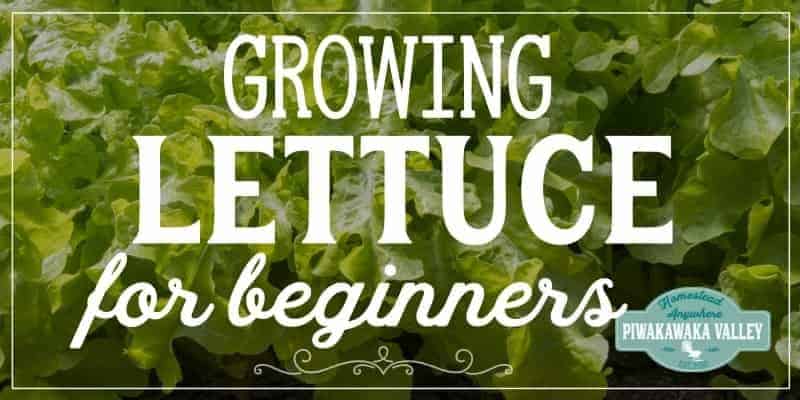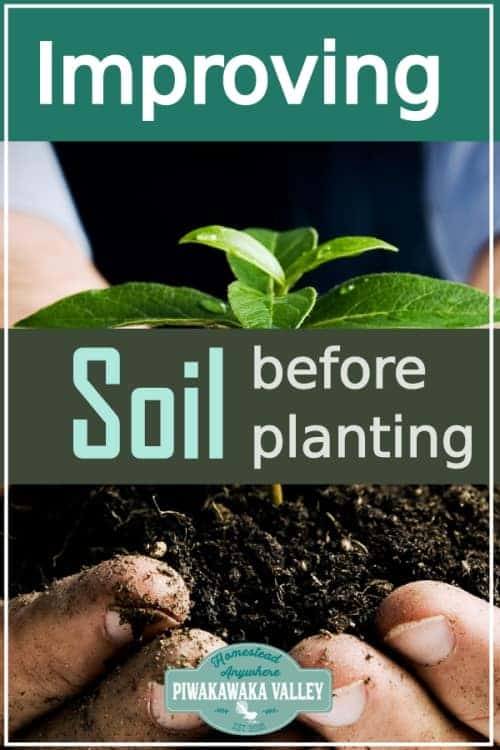This post was most recently updated on January 26th, 2021
Are you looking to get your garden soil preparation done, ready for Spring planting? Do you know what type of soil you have? How to turn bad soil into good soil isn’t so difficult when you know how.
Please read: This information is provided for educational purposes only and is not intended to treat, diagnose or prevent any disease. We encourage you to make your own health care decisions in partnership with a qualified health care professional.
This post contains affiliate links, this means at no extra cost to you, we make a commission from sales. Please read our Disclosure Statement
There is a difference between dirt and soil. Knowing how to turn dirt into soil will be the difference between success and failure in your vegetable or flower garden beds.
How do you turn Bad Soil into Good Soil?
Soil is a complex ecosystem that needs plenty of organic matter added to support the living web of organisms that make bad soil better. Add organic matter in the right balance to improve your soil.
Read on to discover how to find out what type of soil you have and how you can improve it this season and in the seasons coming so that you continue to grow amazing produce in your gardens.
What is damaged soil?
A large majority of North America’s soil has been damaged by poor agriculture and construction practices. Damaged soil is dead and starved of nutrition.
Some symptoms of damaged soil are:
- Over the winter your garden turn in to a cluggy, sticky mess
- Your soil turns rock hard and cracks in the summer heat
- Is it composed of hard clods of dirt that are almost impossible to break, or is a sandy dust that easily blows away?
- When you dig there are few worms or other signs of life
RELATED: Good amendments for rubbish soil
What is Good Soil?
Healthy soil is the basis of healthy plants, a healthy environment and a healthy us. Building good soil is a process, but improving the soil you have is worth the effort.
When your garden soil is in good shape there is less need for additional fertilizers or pesticides. As you are supporting the natural ecosystem which is very good at regulating itself.
RELATED: Using chicken poo in the garden
1. Humus
Organic soil is rich in humus. Humus the end result of decaying materials such as leaves, grass clippings and compost.
Soil with lots of humus content holds moisture, but drains well. Although it only makes up a small portion of the soil (usually about 5 to 10 percent), organic matter is absolutely essential.
Humus binds together soil particles into porous crumbs that allows the air and water to move through the soil.
Also humus holds up to 90 percent of its weight in water, and is able to absorb and store nutrients so it helps keep your soil damp even in drought.
Most importantly, organic matter is food for microorganisms and other forms of soil life that are critical to a good soil for gardening.
On of the best tips on how to turn bad soil into good soil is to increase the amount of organic matter in your soil by adding compost, aged animal manures, green manures (cover crops), mulches or peat moss.
Warning: Be careful incorporating large amounts of high-carbon material (straw, leaves, wood chips and sawdust) in to the soil itself.
Soil microorganisms will consume a lot of nitrogen in their efforts to digest these materials and they may deprive your plants of nitrogen in the short run. It is best to sprinkle these items on the top of the soil as a mulch rather than trying to dig them in.
RELATED the BEST organic soil additions
RELATED: Free Gardening Resources
2. Air
Good organic garden soil is loose and fluffy when you pick it up. It is filled with air that plant roots need. Healthy garden soil is about 25 percent air.
The soil bugs, insects, microbes, earthworms need this much air to live and thrive. The air in soil also supplies the atmospheric nitrogen that is used by plants.
A well-aerated soil will have plenty of pore space between the soil particles. If your soil is made up of fine soil particles (clay or silt) it will have tiny spaces between them, this may mean the air cannot get in.
Soil composed of large particles, like sand, has large pore spaces and contains plenty of air. However, this can mean that the organic matter decomposes too quickly.
To ensure that there is a balanced supply of air in your soil you should:
- Add plenty of organic matter
- Avoid stepping in the growing beds or compacting the soil
- Avoid working the soil when it is very wet
If you are new to gardening, or want some support and knowledge getting a garden started, check out our Productive Gardener Course TODAY
3. Living organisms
Good soil is alive with living organisms, from bacteria and fungi, protozoa and nematodes, mites, springtails, earthworms and other tiny creatures found in healthy soil.
These organisms are essential for plant growth. They help convert organic matter and soil minerals into the vitamins, hormones, disease-suppressing compounds and nutrients that plants need to grow.
Your job as a gardener is to create an environment that allows these soil organisms to do their work.
To do this you need to provide:
- An abundant source of food
- Oxygen (present in a well-aerated soil)
- Water (an adequate but not excessive amount)
4. Healthy pH
Proper pH is also an essential characteristic of healthy soil. It should be pretty close to a neutral pH of 7, tending on the slightly more acidic side due to the rotting organic matter in the soil. Anywhere from 6.5-6.8 is usually acceptable for most plants to thrive.
5. Minerals
Roughly half of the soil in your garden consists of small bits of weathered rock that has gradually been broken down by the forces of wind, rain, freezing and thawing and other chemical and biological processes.
Your soil type is generally classified by the size of these inorganic soil particles:
- sand (large particles)
- silt (medium-sized particles)
- or clay (very small particles).
The proportion of sand, silt and clay particles in your garden soil will determine the texture of your soil and it affects drainage and nutrient availability, which will then in turn influence how well your plants will grow.
6. Water
A healthy garden soil will also contain about 25 percent water. Water, like air, is held in the pore spaces between soil particles.
Large pore spaces allow rain and irrigation water to move down to the root zone and into the subsoil more quickly and easily.
In sandy soils, the spaces between the soil particles are so large that water drains down and out very quickly which is why they are dry.
In clay soils the small pore spaces allow the water to move back upwards to the surface through the process of capillary action. This is why clay is almost always slightly damp.
In waterlogged soils, water has completely filled the pore spaces, forcing out all the air. This suffocates soil organisms as well as plant roots and it becomes a big poggy mess.
Ideally, your soil should have a combination of large and small pore spaces. Organic matter really is the key, because it encourages the formation of good soil.
Each soil has a different combination of these 6 areas. By balancing them you can dramatically improve your soil’s health and your garden’s ability to grow and produce.
To truly correct damaged soil, it is best to test what you have, this is the kit I recommend.
What type of soil do you have?
Soil can vary significantly in its make up. It can range from very fine particles to coarse and gravelly.
You don’t have to be a scientist to determine the texture of the soil in your garden.
The silty soil found in an old floodplain is very different from stony mountain soil. The clay soil that lay under a glacier for millions of years is nothing like the sandy soil near an ocean.
Soils are generally described according to the main type of soil particles present – either sand, silt or clay.
By doing a simple soil test, you can easily see what kind of soil make up you are dealing with.
1. Fill a quart jar about one-third full with topsoil and add water until the jar is almost full.
2. Screw on the lid and shake the mixture vigorously, until all the clumps of soil have dissolved.
3. Now set the jar on a windowsill and watch as the larger particles begin to sink to the bottom.
4. Leave the jar undisturbed for several hours. You will find the layers are slightly different colors, indicating various types of particles.
The bottom layer is sand, then silt, then clay then the top layer will be organic material – there may also be some organic material floating on the top.
Garden Soil Preparation for Planting
Before you plant your garden for the season, it is now that you should be working on improving soil structure and pH, adding plenty of organic matter and getting those weeds out of the way.
If it is a new bed, you can simply put down a thick layer of damp cardboard. Cover this with a layer of compost or well rotted animal manure (horse, rabbit or cow is the best).
Top this with a layer of old leaves if you have them, if not skip this step.
Then top the bed with a thick layer of mulch. Give the whole bed a good watering and you are ready to go.
If you are planning on planting in to the actual soil however, I recommend you amend it in the following ways first.
Also, check out our post on succession gardening
We also have a free interactive succession garden planning spreadsheet that you can access by signing up to our newsletter, use the form at the top of this post!
How to Improve Garden Soil Structure: Building Good Soil
Even if your soil is very bad, it can be dramatically improved this season, and then with a good maintenance program, it will get better each year.
How to improve Sandy Soil
Sand particles are large, irregularly shaped bits of rock and shell. In a sandy soil, large air spaces between the sand particles allow water to drain very quickly causing it to dry out.
Nutrients will also drain away with the water, often before plants have a chance to absorb them. Sandy soils are usually nutrient-poor.
Sandy soils let too much air in causing what organic matter that is there to rot away too fast and they simply just don’t hold moisture like you need it to.
To improve your sandy soil you should:
- Work in 3 to 4 inches of organic matter such as well-rotted manure or finished compost to the top 6 inches of soil
- Mulch heavily around your plants with leaves, wood chips, bark, hay or straw
- Add at least 2 inches of new aged organic matter each year to the top of the soil
- Grow cover crops or green manures in the ‘off season’ and either dig these in or allow them to act as additional mulch.
How to Improve Clay Soil
Clay particles are small, flat and sticky.
Clay tends to pack together so tightly that there is hardly any pore space at all.
This means that when clay soils are wet, they are sticky and practically unworkable.
They drain slowly and can stay waterlogged and cold well into the spring. Once clay soils finally dry out, they often become hard and full of clumps of dirt, and the surface cracks into flat plates in the heat of summer.
Clay soils are generally low in both organic matter and microbial activity. Luckily, most clay soils are rich in minerals which will become available to your plants once you improve the texture of the soil.
To improve clay soil you will need to:
- Work 2 to 3 inches of organic matter into the top 4-6 inches of the soil. Then add at least 1 inch more each year after that.
- Add the organic matter in the fall, if possible before the soil becomes too water logged.
- Consider using permanent raised beds to improve drainage and to stop you compacting the growing area.
- Minimize tilling and spading as it just makes the soil clumpy
How to Improve Silty Soil
Silty soils are often found on old river beds. They contain small irregularly shaped particles of weathered rock, which means they are usually quite dense and have relatively small pore spaces and poor drainage.
They tend to be more fertile than either sandy or clay soils due to the high mineral content of the crushed rock.
To improve silty soil you should:
- Add at least 1 inch of organic matter each year to the top 4 inches
- Avoid soil compaction by avoiding unnecessary tilling or walking on the garden
- Consider constructing raised beds to improve drainage
Fixing your Soil pH
The pH level of your soil indicates its relative acidity or alkalinity.
Most essential plant nutrients are soluble at pH levels of 6.5 to 6.8, which is why most plants grow best in this range.
If the pH of your soil outside of this range you will find that soil nutrients start to become chemically bound to the soil particles, which makes them unavailable to your plants.
To improve the fertility of your soil, you need to get the pH of your soil within the 6.5 to 6.8 range.
pH isn’t something that you can change in one day, it is something you need to work on a few times each season, and monitor and adjust as you need to.
What to do with Acidic Soil.
If the pH of your soil is less than 6.5, it may be too acidic for most garden plants other than a few like blueberries and azaleas who require acidic soil.
The most common way to raise the pH of your soil (make it less acidic) is to add powdered limestone.
There are a few different forms of lime that you can add to raise your soil pH.
Dolomitic limestone will also add magnesium to the soil. Apply it in the fall because it takes several months to alter the pH.
Plain limestone will only add calcium carbonate in the form of lime without the magnesium
Crushed oyster shells add all sorts of beneficial minerals as well as lime.
Wood ash will also raise the pH, and it works more quickly than limestone and contains potassium and trace elements.
However, if you add too much wood ash at once, you can drastically alter the pH and cause nutrient imbalances very quickly.
To raise the pH of your soil by about one point:
In sandy soil: add 3 to 4 pounds of ground limestone per 100 square feet.
In loam (good garden soil): add 7 to 8 pounds per 100 square feet.
In heavy clay: add 8 to 10 pounds per 100 square feet.
What to do with Alkaline Soil
If your soil is higher than 6.8, you will need to acidify your soil.
Soils in arid regions, are typically alkaline. Soil is usually acidified by adding ground sulfur or you can also incorporate naturally acidic organic materials such as conifer or pine needles, sawdust, peat moss and oak leaves.
To lower soil pH by about one point:
In sandy soil: add 1 pound ground sulphur per 100 square feet.
In loam (good garden soil): add 1.5 to 2 pounds per 100 square feet.
In heavy clay: add 2 pounds per 100 square feet.
Using Mulch to Turn Bad Soil into Good Soil
Mulch has been a real game changer for my gardening experience. Mulching with organic materials on the top of the soil provides the perfect conditions for the soil life to move in and work their magic.
I prefer to use woodmulch from an arborist. It contains both the leaves, bark and sticks all shredded together, and if you are lucky your town might supply it for free if you ask the local council.
A good thick layer of 4-6 inches all over my garden has limited the growth of weeds, fed the soil, encouraged worms and other goodies to move in and means I don’t even have to water my garden.
For more on mulching read here
This has been a particularly hot and dry summer here and I have not had to water anything in my mulched gardens. For a beginners guide to back to eden gardening read here.
Using Cover Crops to Turn Bad Soil into Good Soil
Cover crops are plants that you grow in the garden to fulfill several purposes. Some, like peas, beans or clover are nitrogen fixing and help add this to the soil.
Some cover crops send down big root systems and help break up the soil. Others make lots of leaves and are a great way of adding organic matter in the garden for very little cost.
All cover crops are helpful at keeping weeds away. You can read more about cover crops here.
Garden Soil Preparation: Turn Bad Soil into Good Soil
There are a lot of things here to take in to consideration, but the basics are, remove the weeds, add plenty of organic matter and mulch heavily. Let the earthworms do most of the rest of the work.
Once you have provided food, moisture and shelter they will move in and start to work their magic. Fungi threads are the white stuff you will find after a while in your mulch, this is such a great sign! Don’t try and get rid of them.
This is not a quick fix situation, but once you have a plan in place to improve your soil, keep at it, knowing that each season will be so much better than the last!
If you would like help getting the most out of your garden, I would love to help you, find out more here
RELATED: Free Gardening Resources
If you like tips on frugal living, self sufficiency and consuming less, sign up to our newsletter below, I would LOVE to have you
For further reading, I also recommend all of these books. I own every one of them and they are amazing resources!








